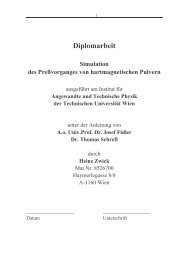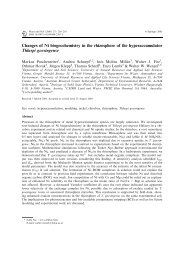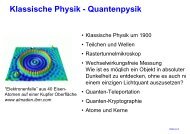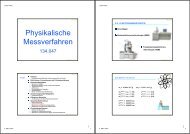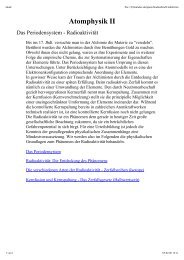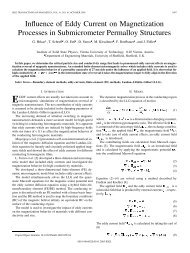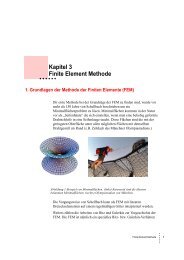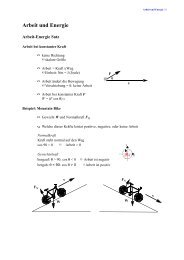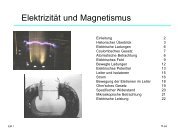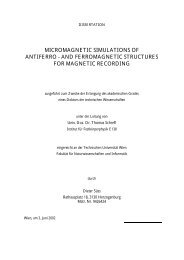Read Back Signals in Magnetic Recording - Research Group Fidler
Read Back Signals in Magnetic Recording - Research Group Fidler
Read Back Signals in Magnetic Recording - Research Group Fidler
Create successful ePaper yourself
Turn your PDF publications into a flip-book with our unique Google optimized e-Paper software.
Analytical Calculations<br />
n n<br />
⎛HH, x( x, z− 2 iL) + HH, x(<br />
x, −z− 2( i+ 1) L)<br />
⎞<br />
∞ ⎜ ⎟<br />
n<br />
H H ( xz , ) = ∑⎜0<br />
⎟.<br />
(3.21)<br />
k = 0 ⎜ n n<br />
HH, z( x, z−2 iL) −HH, z(<br />
x, −z− 2( i+ 1) L)<br />
⎟<br />
⎝ ⎠<br />
Figure 3.7: The simplified read head model (left) for perpendicular record<strong>in</strong>g. In the right<br />
picture the mirror heads are <strong>in</strong>dicated, which replace the SUL with its high permeability<br />
[22].<br />
The headfield for perpendicular record<strong>in</strong>g is shown <strong>in</strong> Figure 3.8. Here the gap was aga<strong>in</strong><br />
60 nm and the sens<strong>in</strong>g layer thickness 5 nm. The fly<strong>in</strong>g height was assumed to be 10 nm and<br />
the distance ABS to SUL 20 nm. The series expansion was aborted after the first 10 terms.<br />
For perpendicular record<strong>in</strong>g, where the data layer is ma<strong>in</strong>ly magnetized <strong>in</strong> z-direction, only<br />
H contributes to the signal field. So for perpendicular record<strong>in</strong>g the signal field is<br />
n<br />
H , z<br />
approximately proportional to the magnetization of the data layer. In contrast to longitud<strong>in</strong>al<br />
record<strong>in</strong>g the bits are detected and not their transitions.<br />
37



